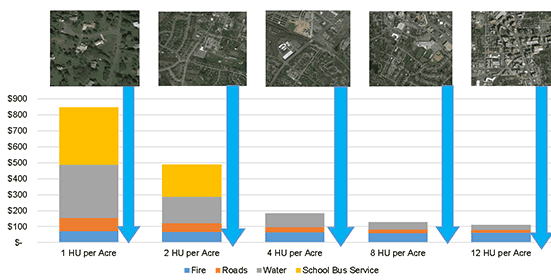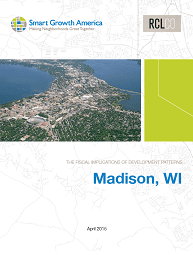Market Pitfalls of Form-Based or Smart Codes

The intent of many form-based or smart codes is to promote smart growth within a community. Smart growth is a very broad concept. It is a general term for policies that integrate transportation and land use decisions by encouraging more compact, mixed-use development within existing urban areas, and discouraging dispersed, automobile-dependent development at the urban fringes of metropolitan areas.
Most communities use zoning to control local land use, including the location, type, density, size, lot coverage, and design of development and requirements. Conventional codes tend to encourage lower-density, single-use, automobile-dependent land use by mandating generous parking supply, limiting density, and in many ways prohibiting innovative urban development. Many communities are now changing their zoning codes to reflect smart growth objectives.
Without getting into the merits of whether or not a community should promote smart growth, it is critical that if smart codes are implemented to promote the ideals of smart growth, they should create the framework to achieve the desired end result. When planners calibrate smart codes to local zoning ordinances, they spend time ensuring the document is consistent with other development control documents, works from a process and implementation standpoint, and provides for the desired form of development. However, planners often don’t consider whether the new policies would have an adverse impact on the local real estate market. Imposing requirements that could hinder job creation is particularly unwise in these times when economic growth is a key consideration for local governments.
After reviewing form-based smart codes from around the country, it became clear that a number of common provisions have the potential to cause problems from a market perspective. The top-ten common market mistakes in form-based codes are the following:
- Requiring rear alleys on all residential product that the market may not be able to support and/or desire.
- Forcing a grid on all development.
- Promoting or requiring higher density than is supported by the market (e.g., requiring structured parking when the market supports only four-story walk-up apartments).
- Requiring items that cost the developer more than the market will support (e.g., accent pavers or dedicated public open space, wider sidewalks, decorative walls, green standards, etc.).
- Requiring a certain percentage of retail on the ground floor of building frontage—often not supported by the market—which leads to undesirable vacant storefronts.
- Required land-use mix—Many codes dictate a desired land-use mix based on the district type (in particular a certain jobs to housing mix) that may not be feasible given local market conditions.
- Imposing housing requirements that are inconsistent with local buyer preferences, making it impossible for the development community to respond to the market. This includes items such as percentage of single-family detached versus multifamily, porch requirements, parking requirements, garage placement, etc.
- Not allowing flexibility with streets and circulation, which can be challenging in places with substantial wetlands or other natural barriers.
- Affordability requirements—While it may well make sense to accommodate a variety of housing types and prices within a community, in some areas mandating affordable housing can make it financially impossible to develop housing at all.
- Market disadvantage—Many smart codes only apply to certain areas of a jurisdiction and can unfairly impose additional constraints and costs in those areas.
Smart codes appear to be the wave of the future of land development codes. It is important that when communities adopt codes with the intention of creating a certain type of walkable environment, they don’t unintentionally stifle the market and end up with a code that is too restrictive, cost-prohibitive, and not market-driven. This can lead to plans that are not realized and goals that are not achieved.
Related Articles
Speak to One of Our Real Estate Advisors Today
We take a strategic, data-driven approach to solving your real estate problems.
Contact Us







